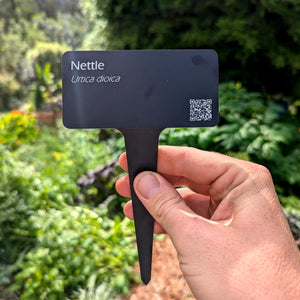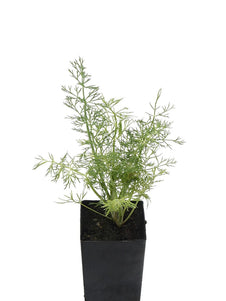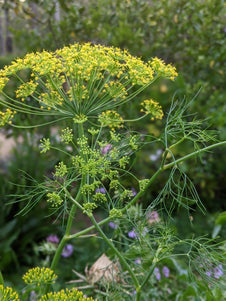













Dill
Dill

- In stock, ready to ship
- Inventory on the way

Usually available: March to December
Life cycle: Annual
Height: 40cm - 1.2m
Position: Sun / part shade
Soil preference: Well drained
This is how we pack and send your Herb Plants to all states except TAS & WA
You will receive
- 1 Dill Herb Plant in a 50 X 75mm tube - General growing instructions
All of our Herb Plants are grown organically with certified organic potting mixes and fertilizers
Botanical Name: Anethum graveolens
Dill is an aromatic, annual herb, growing from 40-75 cm high. The fine blue-green leaves are delicate, feather like and fan out in like an intricate web on small stems, extending approximately 20 cm. The main stem is tall, slender and hollow. It branches out at the top and supports a wide mass of yellow flowers held in small clusters. The flowers act as beneficial insect attractants at the height of summer.
The native habitat of dill is the Mediterranean, Southern Russia, Southern and Central China and in some areas of Spain, Portugal and Italy. It is a very popular herb in Russian cooking.
Today, dill is known mostly for its culinary uses, but its history goes back to the Middle Ages, where it was often mentioned in writing. In medieval times, dill was associated with superstitious beliefs and magic. Placing dill above the door was reputed to ward against witches and sorcery. Its name was taken from the term ‘dilla’ which means ‘to lull’ in deference to the lulling of discomfort associated with digestive disorders, particularly in children.
Growth Habit
Dill is a hardy plant that is relatively easy to grow, as long as it has a full sun aspect. It tolerates many different soil types and growing conditions across Australia. However, it will do best in soils that are moist and rich inorganic matter. The plants mature and flower during the summer months, so watering and mulch for water retention is required. A warm summer suits them best, but dill plants are tolerant of the cold in frost-free areas.
Dill has one main tap root, which supports the entire plant and due to the height of the main stalk and the top heavy flower clusters, the plant may need wind protection. This could be a natural planting of higher or bushier plants surrounding the dill plant or artificial protection. This is especially important once the flower heads begin to produce seeds because the hollow stalks are easily broken when weighed down. Dill is prolific seed producer, with up to 25 000 individual seeds found in one ounce of dried seed material.
Dill will self-seed quite readily, so plant your first plants where they will be happy as a permanent resident. If you would like some control over your supply, plant or sow seeds at fortnightly intervals. Leave 60 cm between rows, thin to 30cm apart and consider choosing a position for wind protection.
Culinary Uses
Dill has many culinary uses and is perhaps best known for helping to create ‘dill pickles’. The tangy, pungent flavour of dill goes well with many dishes and may be used as freshly collected leaves, dried leaves or dried seeds. Dill is often used to season fish, poultry, meat, vegetable and egg dishes while the fresh leaves are used as a tangy garnish. An easy way to use dill is in herb butter, in sauces, dips, vinegars, olive oil dressings, salad dressings and in sour cream or cream cheese.
The best way to add dill to your dishes is to wait until near the end of the cooking process. This way the flavour is fresh and the aroma is at its best when served.
Dill leaves can be picked within two months of planting, with fresh leaves being used that day. Alternatively, they may be frozen in an airtight container and kept for up to six months. To dry leaves for later use, cut the whole stem and hang it upside down in the sun until the leaves are dry. Another method is to lay the leaves flat in a dry, warm place until dry. In each case, store the dry leaves in an airtight container for later use. Seeds are collected by picking the flowers before the seeds ripen and placing them in a paper bag until the seed ripen and drop from the flowers. Some sources recommend drying the seeds further in a hot oven. The flowers may also be picked and used for decoration.
Medicinal Uses
Today dill is primarily a culinary herb. However, it has been used traditionally to treat digestive and stomach complaints. Dill is mildly diuretic and may also have some benefit for helping treat cough, cold and flu symptoms. Chewing dill seeds over a long period of time is said to be helpful in reducing bad breath. As with many herbs, dill is still considered to be a general tonic.
Companion Plants
Dill is considered to be a good companion plant for cucumber, lettuce, cabbage and onions. It is a poor companion for carrots and tomatoes.
All information provided on this website is for informational purposes only. Please seek professional advice before commencing any treatment.






